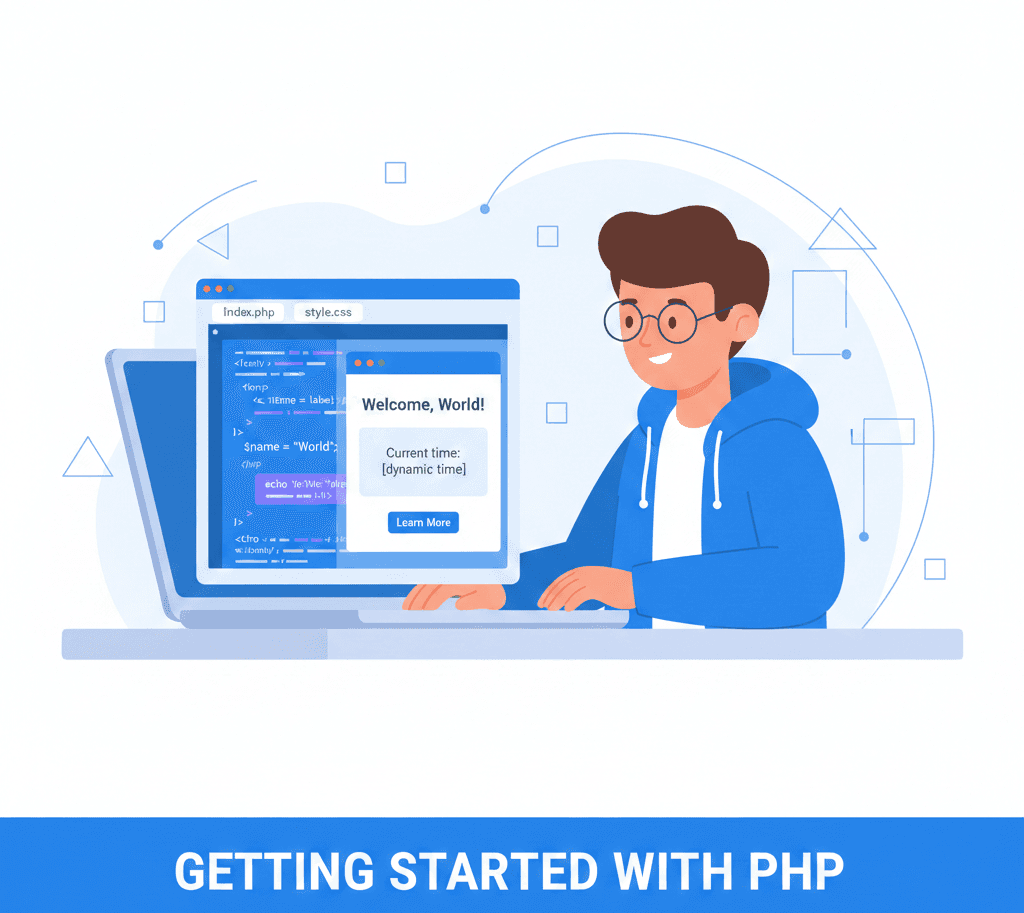PHP (Hypertext Preprocessor) is a popular scripting language primarily used for web development. It allows developers to create dynamic web pages and applications by embedding PHP code directly within HTML. PHP is particularly suited for server-side scripting, meaning that the code is executed on the server before the content is sent to the user's web browser.
-
Explains what PHP is and how it works with HTML to create dynamic web pages.
-
Shows how to write basic PHP syntax using opening and closing tags.
-
Covers
echoandprintfor outputting data to the browser. -
Introduces core PHP data types like strings, integers, floats, arrays, and objects with simple examples.

